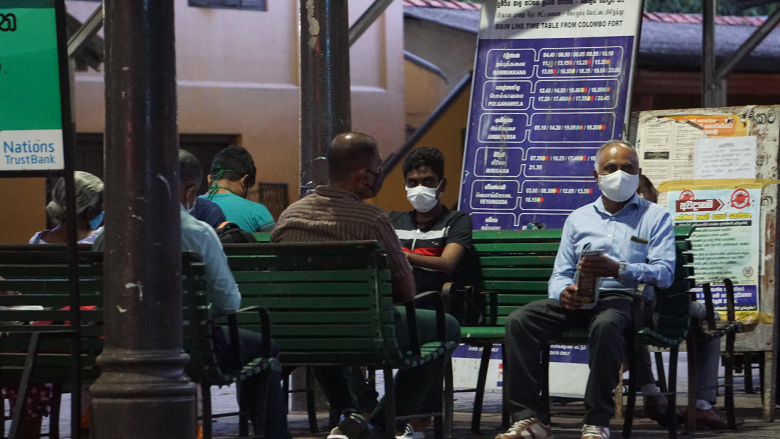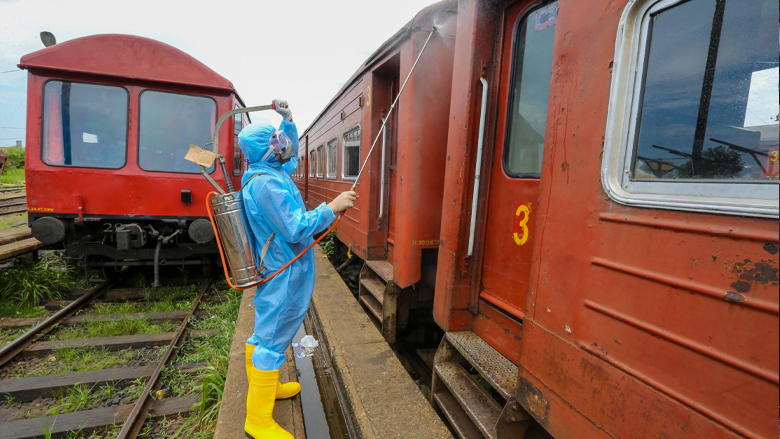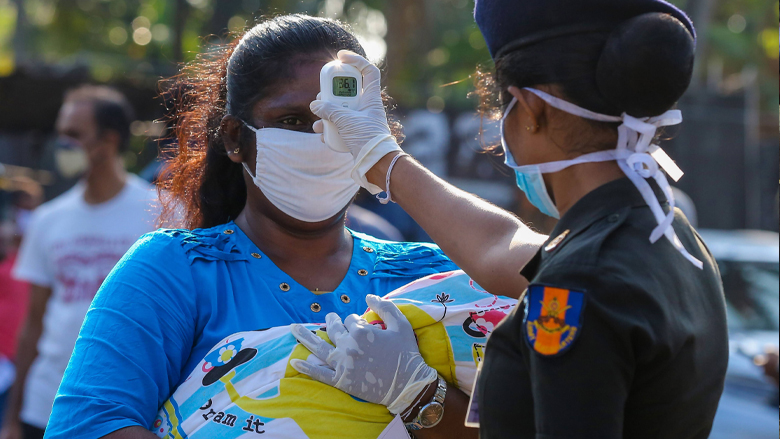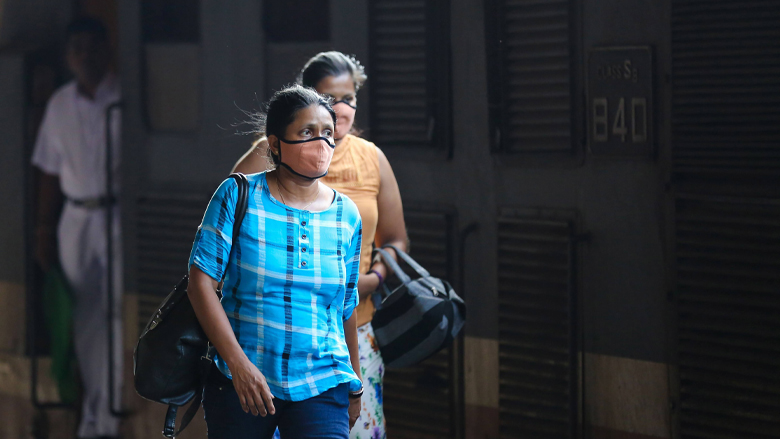Challenge
On March 11, 2020, the World Health Organization (WHO) declared COVID-19 a global pandemic. Sri Lanka was extremely vulnerable to the spread of the virus because of its thriving tourism industry and large expatriate population. The first case was detected on January 27, 2020 and the first Sri Lankan national tested positive for COVID-19 on March 10, 2020. In response, the Government of Sri Lanka rapidly introduced measures to curb the spread of the disease and imposed a strict island-wide lock-down on March 16, 2020. Infected patients were treated in secure environments, testing and contact tracing efforts were quickly escalated, and awareness raising campaigns on risk and prevention measures were implemented. Already facing fiscal constraints, the pandemic placed additional resource demands on the country. The challenge was to quickly coordinate the mobilization of financial, technical and procurement support to contain the pandemic.

Approach
Within this context, the World Bank responded quickly, leveraging the dedicated COVID-19 Fast-Track Facility, to mobilize resources and prepare the project in just 10 working days. Recognizing the limited availability of the health authorities for separate detailed design discussions, strategies and project priorities were built on gaps and needs outlined in the Health Disaster Preparedness, Response and Recovery plan that was being developed by the Ministry of Health (MoH) and development partners including WHO, World Bank and Asian Development Bank (ADB), among others. This approach allowed for swift preparation, while ensuring coordinated financing support by multiple partners. Bank financing was used to fill resource gaps and to supplement and scale up Sri Lanka’s pandemic management strategy.
The project adopted a flexible approach to respond to urgent health needs, enabling reimbursement for routine goods and operating expenditures for facilities that were engaged in the COVID-19 response. This helped identified facilities to quickly upgrade their wards to make them COVID-ready. Flexibility to use ongoing government procurement methods (adopting the principles of advance procurement) were provided for the first three months following project signing.
Activities were also initiated to strengthen the National Emergency Operation Unit and its island wide network. For better preparedness, selected hospitals are now being developed as medical centers for current and future pandemic situations, and the existing laboratory system is being strengthened. The project is also helping to develop the country’s infection control and surveillance systems and supporting epidemiological studies on the patterns of transmission, and on community response and behavior. This research will underpin long-term plans and strategies on pandemic management.

The World Bank also provided additional financial resources in the form of cash transfers to high-risk populations including the elderly and disabled and patients with chronic diseases. This social sector response was in addition to the health sector response to manage vulnerabilities that emerged due to COVID-19.
The project will also strengthen mental health services and services for victims of gender-based violence (GBV) at the community level especially during emergency situations. These activities will be implemented with support of a grant from the Pandemic Emergency Financing Facility (PEF).
Results
Within six months of project implementation, World Bank financing—both through the International Development Association (IDA) and the International Bank for Reconstruction and Development (IBRD)—has contributed to the following results between March and October 2020:
- As of October 1, 2020, there were a total of 3,380 confirmed COVID-19 cases in Sri Lanka, with 3,233 fully recovered and 13 deaths. The spread of COVID-19 has been limited to 18 out of 26 districts in the country, with 8 districts having no reported cases. Even among the 18 districts with COVID-19 cases, the caseload is concentrated in 6 districts, with the majority of cases in the district of Colombo, the capital city. In the remaining 12 districts there are fewer than 10 cases per district. This relatively low COVID-19 morbidity and mortality number reflects the government’s strong and rapid response and effective implementation of the ‘test, track, isolate and treat’ strategy supported through this project.
- 300,000 units of PPE have been procured and delivered, along with essential medical consumables (‘treat’); 32 quarantine centers are up and running across country (‘isolate’); and 250,000 PCR test kits have been procured through the project, facilitating testing randomly at outpatient departments, in community settings and at ports of entry (‘test’).
- 805 public health inspectors have been provided with motor bikes to travel to conduct contact tracing; and double cabs (pick-up trucks) have been provided to 25 offices of the Regional Director of Health Services (RDHS) to enhance grassroots community outreach (‘track’).
- Plans for transforming select hospitals into 9 provincial case management centers and 25 district level suspected case management centers covering all parts of the country are underway. The preliminary design stage has been completed and site inspections are currently ongoing. The centres are expected to be refurbished with dedicated isolation wards, robust infection control and waste management systems and upgraded laboratory facilities.
- Preliminary work on establishing a Bio Safety Level 3 laboratory at the Medical Research Institute (MRI) has been initiated.
- 699,915 vulnerable populations, which include the elderly, disabled and those with chronic kidney disease from low income households benefited from social cash transfers in the months of April and May 2020.

